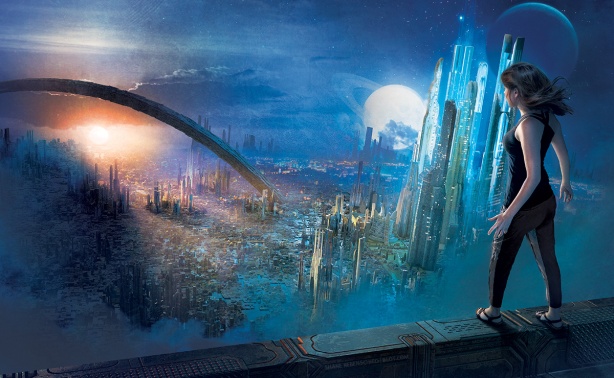
She woke.
And for a split second saw nothing but a cloud of red light.
‘Where am I?’
Premise :
Rose Hartel woke up, today, feeling…different. A voice in her mind urges her to be different, to be happy, to try new things.
This is what you should do, she told herself. Grab things, exist at the center of your life, not the edge.
She can’t say why, but her old life doesn’t fit anymore. Her routines, her solitude, even her pajamas feel suddenly wrong.
But why?
YA Sci-Fi, published June 14th 2016 by Balzer + Bray
About :
If you read one young adult sci-fi this year, make it Change Places With Me by Lois Metzger. Its spare economy and compelling tension mark Metzger as a true, experienced storyteller. It’s very short—I flew through it, unable to put it down. It’s not flashy or romantic, but every word counts and it will stay with you.
The plot relies on a secret, very much in the style of The Adoration of Jenna Fox by Mary E. Pearson, but I enjoyed Changes Places With Me much more. It’s been a long time since I read Pearson’s book (I was a teenager, at the time), but I remember it being very dark. In Change Places With Me, something feels subtly wrong, but there’s no creep factor and [highlight to read spoiler: no “preaching.” The Adoration of Jenna Fox explores the morality of bioethics, but Change Places With Me concerns itself more with Rose’s character arc.]
Theme :
The really interesting thing about this book is that there’s no “bad guy.” There could have been, but the author refused to simplify things that way for the reader. Instead,Change Places With Me just asks a question: “Who do you want to be, Rose?” This story isn’t about right and wrong; it’s about Rose making choices that will define her. Fourteen, fifteen, sixteen—these are young ages to begin defining your whole future, but that’s our lot, as humans, and that’s what all teenagers, like Rose, face.
Rose pressed the buzzer next to the camera lens.
“May I help you?” said a woman’s voice that was flat and generic.
Rose just stood there, frozen.
“Yes?” said the voice. “I can see you’re still there.”
‘I know your voice,’ Rose said. ‘The kinds of things you say.’
There was a sigh….”This is Rose Hartel, isn’t it? The hair’s different—it threw me. Listen, go home, Rose. You never came here.”
“I’m not leaving,” Rose said, with a flash of what felt like a long-familiar streak of stubbornness.
Another sigh.
The door buzzed. Rose opened it and stepped inside.
Recommendation :
I recommend it to everyone, especially teens, looking for a short, compelling sci-fi with questions of identity at its center. You won’t find aliens or dystopian arenas, here; rather, you’ll find thoughtful, character-driven tension.
****4/5 STARS
You can check out the awesome book trailer for Change Places With Me below!
Thank you to Lois Metzger and Balzer + Bray for my beautiful review copy of Change Places With Me!









